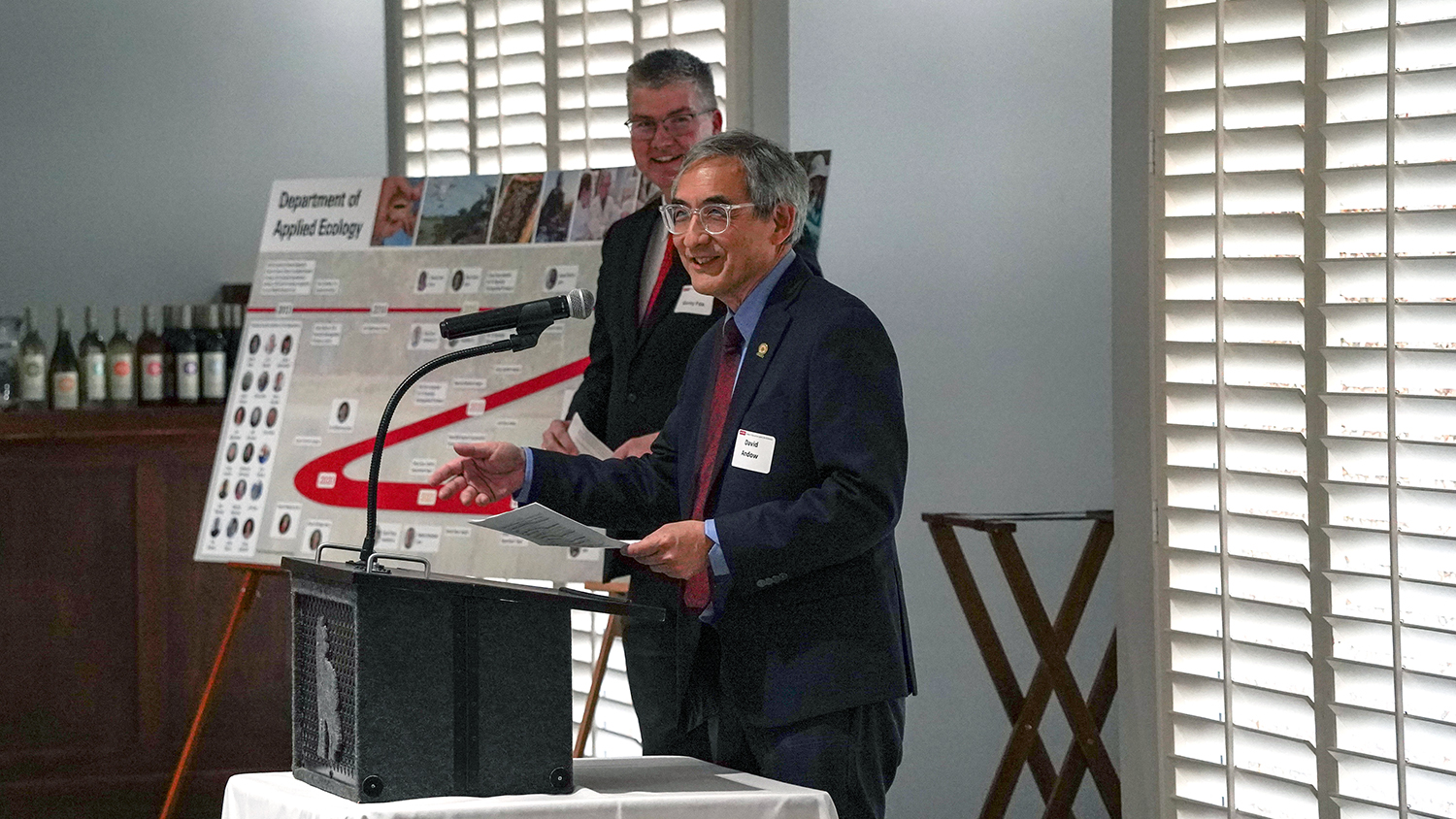Planned METRIC Satellite Facility to Support Next-Generation Plant Sciences Research

The Molecular Education, Technology and Research Innovation Center (METRIC) will open a satellite Core facility in the new NC Plant Sciences Building. The new facility is tentatively scheduled for opening in April 2022 and will be home to state-of-the-art instruments that can even detect how plants communicate.
METRIC will occupy one of three Core facility spaces located in the N.C. Plant Sciences Building, a state-of-the-art research center and home to the N.C. Plant Sciences Initiative (N.C. PSI): an effort to solve some of the world’s grandest challenges affecting agriculture and society today, such as climate change and doubling the world’s current food, feed, and fiber production by 2050 to sustain the world’s rapidly growing population.
METRIC director David Muddiman and associate director, Joe Barycki, recently discussed how the new facility’s state-of-the-art instrumentation and experienced staff scientists will help university faculty, students and postdocs—as well as their industry and government agency partners in research—accelerate discovery through interdisciplinary, team-based science.
What new and exciting capabilities will METRIC’s Plant Sciences Building satellite facility offer to researchers?
David: We will bring two brand-new capabilities. One is the measurement of volatiles, which are chemical compounds that evaporate from plants. When you think of volatiles, think of aromas. Plants give off all kinds of aromas, and they communicate that way too. So the idea of this new technology is the ability to see how plants communicate. When a plant is stressed due to drought, what signal does it give off? What is it doing metabolically to deal with the lack of water? That would be a brand-new technology we’ll bring to NC State University.
Our second brand-new capability will be mass spectrometry imaging. That is actually a method developed at NC State by my research group, and we’re going to duplicate that mass spectrometry imaging platform for the plant sciences. It will allow you to pick a leaf from a plant and actually see where a particular molecule is present on that leaf. You can learn about its location. Normally, you would take a plant and grind it up so you can see if the protein, metabolite or lipid is somewhere in there–and how much of it there is. In mass spectrometry imaging, you can find out where the molecule is located and where it’s concentrated the most. And so that’s an important innovative technology that will be available to all the plant scientists.
What essential capabilities will the new METRIC facility provide?
David: The PSB satellite facility will enable METRIC to continue expanding technologies that we currently offer, making sure we can offer the same types of measurements but in the context of the plant sciences. We will make sure that researchers can more easily measure proteins, metabolites and lipids, for example, along with establishing plant-specific databases.
What would you say to researchers outside the agricultural disciplines who are interested in using the Plant Sciences Building’s METRIC facility?
Joe: Molecules transcend a lot of different disciplines. So do our platform technologies, and our methods associated with them. They can be very adaptable to solving a broad range of problems facing humans. That’s powerful. Plant sciences excel at the genetic level, but the underpinnings at the molecular and atomic level are underexplored. This new facility really allows us to explore these underpinnings together, across many scientific disciplines, by bringing these new research capabilities into agriculture.
David: METRIC is used by 125 different faculty spanning 27 departments and six colleges. That doesn’t count outside campus. There are a lot of industry researchers in RTP that use our facilities as well. Once the building is complete, industry will likely be interested in using our new facility too.
Who will support the researchers using your new satellite METRIC facility?
David: To get the instrumentation working well, it’s important that highly trained scientists fundamentally understand the platforms and how to apply them effectively. We have some really talented people who have dedicated their careers to bringing science to the next level. There will be scientists that will bring more than 30 years of leadership and expertise. They have the knowledge and creativity to work with faculty to find answers using innovative and sophisticated approaches. They won’t be fresh personnel. They’re experienced, able to help, and want to interface with academics. They’re choosing to be partners in science. And without the right people, there is no science.
Joe: One of the most important components of METRIC to me is the integration across campuses. So the ability to use multiple technologies, learning from different systems and applying that to your own system, and having a centralized facility with centralized expertise and “institutional” memory of what’s going on across the campuses. That puts researchers in contact with the right people on campus to move the science forward quickly. They don’t have to reinvent the wheel every time they start a new study.
What else would you like people to know about METRIC and the new facility?
Joe : METRIC has been in operation for three years. It has the potential to impact a lot of people. CALS and the College of Sciences, along with ORI, the Provost’s Office and the Office of Finance and Administration put in a lot of resources to get METRIC established and moving forward. The outcome has been greater than the sum of the parts contributed, because this benefits the entire university.
David : The term “Core facility” sounds routine. We do nothing routine. People come to us with stuff we’ve never heard of. There’s a lot of wacky organisms out there. We’re not using a recipe book. We’re writing the recipe book. Researchers from all NC State colleges and industry are encouraged to contact David Muddiman to learn more about METRIC. Learn more and contact us by visiting the N.C. Plant Sciences Initiative’s partnership page.
- Categories:


